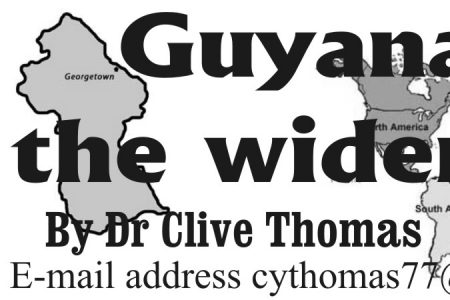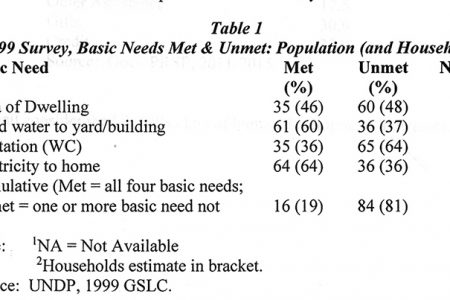
Guyana’s Reality: Is ‘inequality the root of social evil’?
This week’s column concludes the discussion of inequality and poverty in Guyana.

This week’s column concludes the discussion of inequality and poverty in Guyana.

Introduction As promised last week, today’s column begins with a brief report on the only recent study that I know of, which provides a quantitative measure of the direct impact of the global economy on poverty and inequality within nations.

There are two crucial issues which remain to be tackled in this series on inequality and poverty in contemporary Guyana.

Introduction This week I complete my presentation of Piketty’s recent paradigm- shifting contribution to the study of income and wealth inequality (Capital in the 21st Century), which I had introduced last week.

Introduction Last week’s column sought to make it very clear that, in my view, Guyana’s burgeoning inequality and poverty are the direct products of decisions and collective choices made by the ruling cabal of politicians, controllers of criminal networks, economic and financial rogues, and other marauders, who as I have indicated, consider themselves not only ‘too big to jail’ but also destined by the gods to rule Guyana.

In today’s column I propose to take last week’s discussion concerning the impact of massive wage and salary spreads along with the prevalence of the phantom economy on Guyana’s inequality and poverty one step further, through engaging an important emerging global line of thought on these matters.

Absolute v relative poverty This week I shall follow up on three matters related to last week’s discussion of poverty and inequality in the context of Guyana’s growth, joblessness and the minimum wage.

Introduction Over the past two weeks I have been displaying a Table that I had specifically constructed for this series indicating: 1) the annual public sector nominal minimum wage increases announced by government for the years 2006 to 2013.When

Introduction Last week I introduced a Table showing that, over the eight years 2006 to 2013, the average net annual increase in the public sector minimum wage (adjusted for annual inflation) was shockingly low, about one percent.

Introduction To be brutally frank upfront, without 1) strong independent trade unions pushing for national real minimum wage increases, the payment of living wages and the provision of substantial job programmes 2) a considerable strengthening of class-based ideology and politics among political actors and worker representatives 3) rising public awareness and consciousness (fuelled by public advocacy arising from evidence- based analyses), the struggle against grinding inequality and poverty in Guyana is as good as lost.

Inequality and poverty are independent though symbiotically related forces driving Guyana’s political economy.

Introduction The class of United Nations Development Programme (UNDP) human development indicators is an intellectual derivate of the deprivation of basic needs approach, to poverty assessment discussed last week.

Challenges My last column noted that poverty measures based on income/consumption surveys, like the previously considered World Bank 1992, UNDP1999, and the HIES 2006 surveys have been seriously challenged by several analysts.

Introduction In Guyana, inequality and poverty have a lot to do with people’s perception of these.

Inequality results As indicated, this week I begin with reporting the key results of official studies that sought to measure inequality and poverty in Guyana.

This week’s column offers readers a simplified and hopefully accurate description of the methods/techniques employed in official studies of inequality and poverty in Guyana.

Introduction For this and several columns to come, I shall be discussing a number of independent but related topics, under the broad theme of inequality and poverty in Guyana.

The Preliminary Census 2012 attributes the coastland’s smaller household size to an increase in single parent households, but this needs to be examined.

Biggest challenges Thus far, discussion of the 2012 Preliminary Census has focussed on 1) the population decline over the intercensal period 2002-2012; 2) the effect of outward migration; 3) estimating what the population might have been if it were not for item 2; and 4) making the inference, based on the preliminary data that high levels of brain drain (observed in previous intercensal periods) persisted.

Introduction This week’s column continues the discussion of the Bureau of Statistics (BoS) Preliminary Population and Housing Census Report for 2012.
The ePaper edition, on the Web & in stores for Android, iPhone & iPad.
Included free with your web subscription. Learn more.